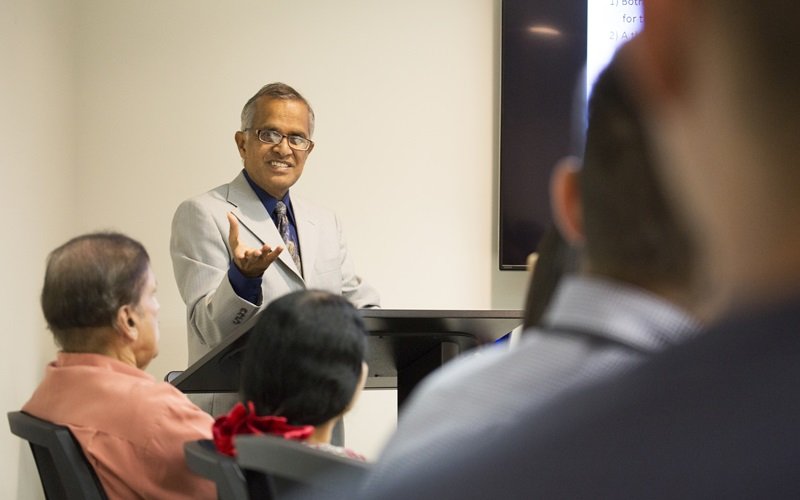
When the polls predicted a tight race for U.S. president, Chandrasekhar Putcha, Cal State Fullerton professor emeritus of civil and environmental engineering, used math to predict former President Donald Trump would be successful in his run to return to the White House.
Putcha was right. Donald Trump won the presidential election with a commanding victory.
With 270 electoral votes needed to win the presidency, Putcha’s mathematical model used polling data to forecast Trump’s win. The math model predicted Trump would win with 271 electoral votes and 47.95% of the popular vote. As more presidential voting results come in days later, Trump has won 312 electoral votes, and is on track to win the popular vote.
The math model used engineering principles based on probability and statistics to analyze polling data from various well-known sources. The methodology captured both the popular vote, as well as the Electoral College.
The model used election polling data from various sources — such as ActiVote, Bloomberg/Morning Consult, Dartmouth College, Emerson College, the New York Times/Siena College, SurveyUSA, UC Berkeley’s Institute of Governmental Studies and the Washington Post. It calculated the probability of winning for each candidate, and assigned the corresponding electoral votes from each state for each candidate. Then, it combined the two sets of data to determine a winner.
To help the model achieve more precise results, Putcha said the model this year included an “uncertainty factor” that used polling data to account for voters’ gender ethnicity, race and age data. Putcha notes the engineering math model is more robust compared to what a political scientist would use.
“Other models tend to use qualitative data, like asking ‘yes’ and ‘no’ questions,” Putcha said. “Our model uses statistical analysis.”
With accurate polling data, Putcha notes the same mathematical model could accurately predict the outcome of the next presidential election, too.
“The model is solid but the uncertainty factor will change, depending on the polling data four years from now,” Putcha said.
In previous presidential elections, the mathematical model correctly predicted Joe Biden would win the presidency in 2020, and that Barack Obama would win the presidency in 2008 and 2012. In the 2016 presidential election between Trump and Democratic nominee Hillary Clinton, the model predicted Clinton to win the presidency.
Putcha said the model’s calculations were correct in 2016, but the polling data used was incorrect.
Putcha began teaching at CSUF in 1981 and retired in 2021. Over his 40-year academic career, Putcha’s interdisciplinary research has focused on engineering reliability and risk analysis. He teaches part time at Cal Poly Pomona and continues research in risk analysis.
Putcha’s research team includes CSUF alumn and doctoral student Vineet Penumarthy ’16 (B.S. mechanical engineering) and economist Brian Sloboda.
Watch Putcha’s Oct. 28 presentation on the model’s prediction, and access presentation slides and photos in Dropbox.